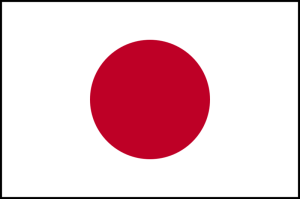I laughed when I heard the Dalai Lama apologize for not being a good meditator. He said that with his speaking schedule and teaching duties, he only had time to meditate four hours per day.
I have no speaking schedule and no teaching duties and I am happy to get in one hour per day of formal sitting meditation. Some days I drop down to half an hour.
So if so little time is spent each day in formal zazen, what do we do with the rest of our time? Can we at least maintain some level of mindfulness throughout the day? Thich Nhat Hahn teaches forty nine mindfulness verses that we can recite each day, each triggered by a particular event such as waking up in the morning, putting our feet on the ground as we get out of bed, taking a shower, sipping tea, and so on. You can find them in Present Moment, Wonderful Moment.
But the most challenging method of maintaining mindfulness throughout the day when we are not sitting in formal zazen but are instead doing our job, involves the hara (Japanese) or dantian (Chinese). In Tantric circles, it’s known as the third chakra. It’s in the center of the body, about three finger widths below the navel/belly button, half-way between the front and back of the body (to be more precise, about one-third of the way from the front to the back). If we place our concentration or attention there, it will start burning with a pleasant warm glow.
The goal of off-the-cushion mindfulness is to keep that warm glow going all day long. I prefer to imagine a small bonfire burning there. Some people tell me they imagine an old-fashioned, heat-generating incandescent lightbulb there. Others see a bundle of burning incense sticks. Whatever works is good.
Sometimes my bonfire is replaced by the big red dot of the Japanese flag, the world’s simplest flag, the flag that says: ZEN! The big red dot can be interpreted as representing the concentration of Zen. Of course, it also represents the sun, so it gives off heat. As we use it, the heat is just a friendly warm glow.
It certainly requires mindfulness to keep the hara activated, i.e., warm all day. Like any other practice, when we screw up we just start over again, i.e., whenever we become aware that our hara is cool, we fire it up again.
This practice pays big dividends when we begin our daily four hour meditation, or perhaps our one hour or half hour meditation. Instead of starting off ice cold, our hara is already up and running and ready to work its magic. In other words, mindfulness throughout the day provides major support for formal sitting. Heedlessness throughout the day makes formal sitting difficult or impossible. We can’t be scattered and mindless all day and expect our present moment focus to come back on demand.
Zen teachers invariably teach us to put our mind in our hara when working on a koan. We can also put our mind there when counting exhalations from one to ten as we learned in Beginning Zen. The hara breathes in, the hara breathes out. When we segue into metta/lovingkindness meditation, we can perform that meditation from the hara as well.
If you try this practice, you will discover how easy it is to become unmindful and to let your fire burn out. Mindfulness training off the cushion is more important than mindfulness training on the cushion if most of our time is spent off the cushion. So the Dalai Lama and me need to work hard on off-the-cushion mindfulness. And remember, this important mindfulness practice can also benefit serious meditators as well.


1 comment